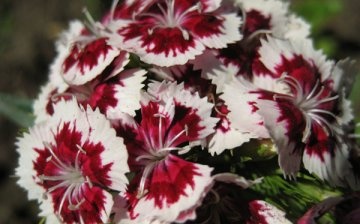Growing Turkish carnations
Carnation is distinguished by its cold resistance, it can be planted before winter and not worry about how the plant will endure cold and frost. Unlike its Chinese counterpart, Turkish carnation is a perennial plant - in the first year, lush bushes are formed, which bloom only by the second year of life.
It is better to grow Turkish carnations in sunny areas, although in shady places the plant will delight you with its flowering. However, in order for the flowers to form on the carnation as much soil as possible, it is better to choose a fertile one.
But even in the absence of suitable soil, you should not postpone the cultivation of Turkish carnations. In this situation, wood ash, compost or humus will help, which should be added to the dug soil.
The prepared substrate must be well moistened before sowing carnation seeds. In early summer, you can start sowing seeds in shallow grooves. The grooves should be lightly covered with earth and tamped, and then covered with dense material.
If the seeds were sown before winter, and October is most suitable for this, then the grooves do not need to be shed with water.
Spring young shoots of Turkish carnations should be protected from direct sunlight. This is done using a covering material until the plant gets stronger.
When caring for a carnation, you should pay special attention to watering, since any waterlogging or stagnation of moisture can cause root rot in the plant. It is recommended to water Turkish cloves up to twice a week.
This plant reacts well to feeding. For the entire life cycle of a carnation, it is recommended to carry out three dressings, after which it is imperative to loosen the soil.



